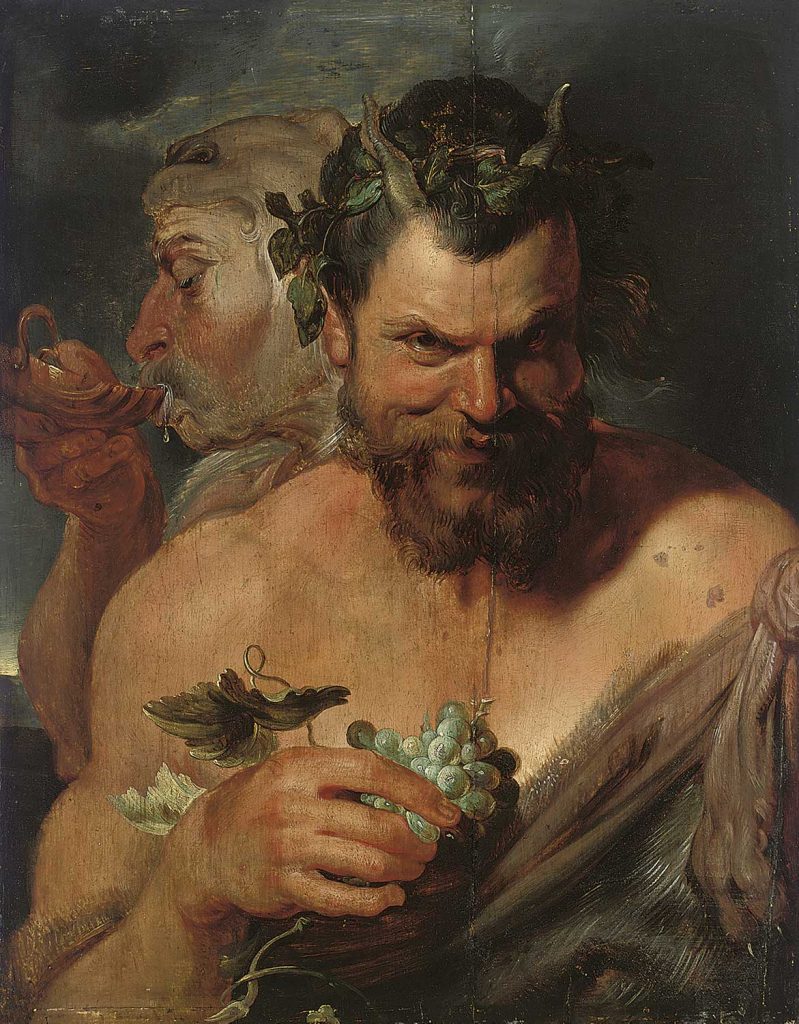
Two Satyrs by Peter Paul Rubens was created in 1617 – 1619. The painting is in Alte Pinakothek München. The size of the work is 75,5 x 61 cm and is made of oil on wood.
About the Work
Rubens’s creative painterly style can be studied in an exemplary fashion in this work. An x-ray reveals that originally only the satyr in the foreground was planned. At a later stage he added two more planks to the panel, one to the left and one at the bottom, and included the second satyr whose head does not appear as brightly because it was painted on a dark background. Rubens was probably inspired by Classical cameos to place the heads unusually close together. In order to characterise these wild natural creatures, his brushwork is free and informal.
About the Artist
Sir Peter Paul Rubens (28 June 1577 – 30 May 1640) was a Flemish artist and diplomat. He is considered the most influential artist of the Flemish Baroque tradition. Rubens’ highly charged compositions reference erudite aspects of classical and Christian history. His unique and immensely popular Baroque style emphasised movement, colour, and sensuality, which followed the immediate, dramatic artistic style promoted in the Counter-Reformation. Rubens was a painter producing altarpieces, portraits, landscapes, and history paintings of mythological and allegorical subjects. He was also a prolific designer of cartoons for the Flemish tapestry workshops and of frontispieces for the publishers in Antwerp.
Rubens was born and raised in the Holy Roman Empire (modern-day Germany) to parents who were refugees from Antwerp in the Duchy of Brabant in the Southern Netherlands (modern-day Belgium) and moved to Antwerp at about 12. In addition to running a large workshop in Antwerp that produced paintings popular with nobility and art collectors throughout Europe, Rubens was a classically educated humanist scholar and diplomat who was knighted by both Philip IV of Spain and Charles I of England. Rubens was a prolific artist. The catalogue of his works by Michael Jaffé lists 1,403 pieces, excluding numerous copies made in his workshop. Read more in Wikipedia
Order a reproduction of this work (printed on canvas)
